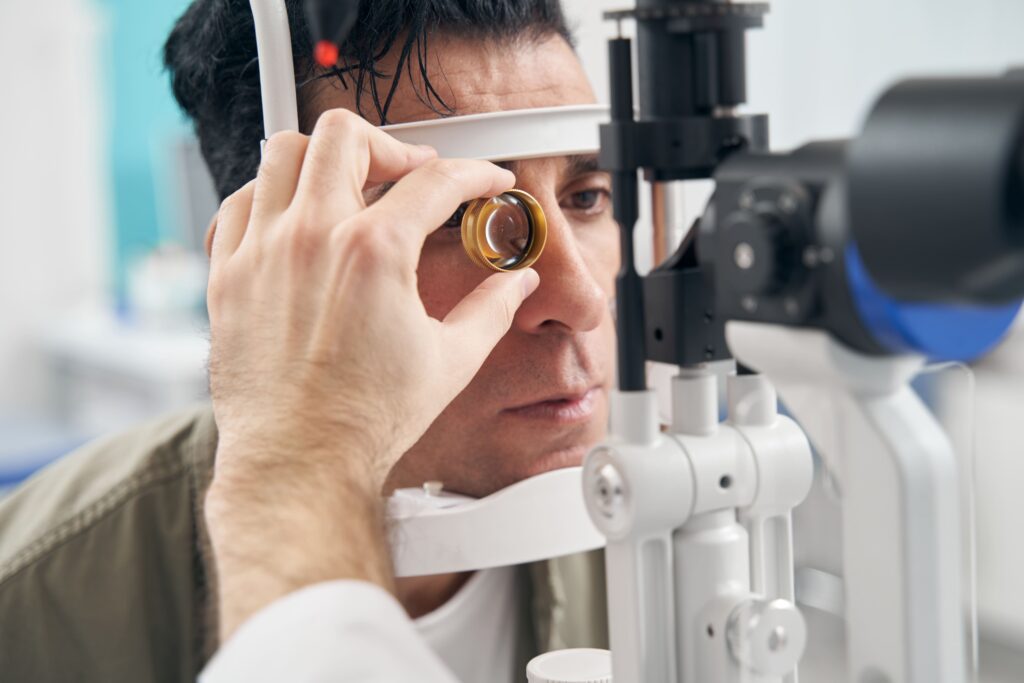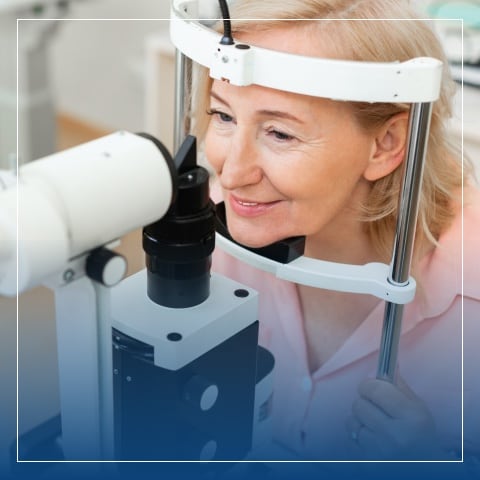Reviewed By: Laura Belka, OD
The eye is an incredibly delicate organ that deserves our best attention and care. But when many of us live with the gift of sight on a regular basis, we overlook the symptoms of dry eye. Instead, that light irritation is dismissed as temporary discomfort—a passing “phase.”
In reality, ignoring dry eye symptoms can have long-term consequences for not just your vision but also your overall eye health, too. It’s time to get that scratchy feeling checked by an experienced dry eye specialist.
What is Dry Eye Disease?
Dry eye disease is a common but chronic lubrication and moisture deficiency in the eye. Our eyes need tears to stay comfortable and healthy and to keep our vision “sharp.” When the eye does not produce enough tears, or they evaporate too quickly, the eyes feel sharp, dry, and itchy. Other symptoms include redness, a gritty sensation, blurred vision, and increased light sensitivity.
If this sounds like you, you may have dry eye. Additionally, dry eye occurs when the eyes do not create the right type of tears or tear film.
What Do Healthy Tears Look Like?
A healthy tear film has three layers:
- The oily layer (outer layer) is produced by the meibomian glands.
- The watery layer is produced by the lacrimal glands.
- The mucus layer (inner layer) is produced by goblet cells in the conjunctiva.
Dry Eye Symptoms
- Stinging and burning
- Scratchiness, grittiness, or feeling like something is in your eye
- Strings of mucus in or around the eyes
- Redness or irritation, especially in the wind or near cigarette smoke
- Contact lenses are painful
- Glassy, tearful eyes
The Dangers of Ignoring Dry Eye Symptoms
When you avoid regular eye appointments and ignore dry eye symptoms, you risk the following dangers:
1. Chronic Discomfort
Ongoing discomfort and irritation may not always go away on their own. Living with this discomfort can lower your quality of life, making simple daily tasks difficult like reading, working on a computer, or driving.
2. Vision Impairment
Dry eye causes blurry vision, which makes it hard to focus. Gradually, untreated dry eye leads to progressive vision impairment, affecting your ability to see clearly and perform visual tasks.
3. Corneal Damage
The cornea, the clear front part of the eye, depends on a healthy tear film for nourishment and protection. Without a healthy tear film, the cornea becomes vulnerable to damage like corneal abrasions, infections, and ulcers. Prolonged corneal damage can lead to more debilitating issues that require extensive treatment or surgery.
4. Increased Risk of Eye Infections
Now that the tear film is weak or destroyed, good bacteria and other pathogens can no longer thrive. The lack of lubrication and protection from good bacteria welcomes infections like conjunctivitis (pink eye) and other inflammatory conditions. These painful conditions require medical intervention, which may lead to long-term conditions later down the line.
5. Reduced Productivity
Chronic dry eye symptoms hinder overall well-being. Visual difficulties and discomfort lead to debilitated work productivity, concentration, and emotional health. But with the right treatment, you can stop dry eye before it impacts your happiness.

Dry Eye Treatment Options
Dry eye may seem like a minor problem on the surface, but many cases won’t disappear without further attention. When you seek a dry eye specialist, they will assess the underlying causes of your condition and recommend appropriate dry eye treatments. Treatments may include tear drops for lubrication, LipiFlow for dry eye therapy, or punctual plugs to block drainage.
Want to learn more about effective dry eye treatments? Click here.
Dry Eye Prevention
Sometimes, situations occur that we can’t always control. Regardless, performing preventative health to stop conditions before they arise and progress is vital. Remember to consider the following self-care measures:
- Practice Proper Eye Hygiene: Clean your eyelids and lashes daily to remove debris and lower infection risk.
- Blink Often: Consciously blink during visually-straining tasks like reading or using technology.
- Stay Hydrated: Drink plenty of fluids to encourage healthy tear production.
- Use a Humidifier: Introduce moisture to dry indoor environments using a humidifier, especially during the winter.
- Take a Screen Break: Wear blue light-blocking glasses and blick often when spending long periods in front of digital screens. Consider artificial tears for added eye lubrication.
Relieve Dry Eye with Carolina Eyecare Physicians
For more information on dry eye symptoms and treatment, book an appointment with Carolina Eyecare and bring clear vision to life.
**The information provided in this blog on dry eye is for general informational purposes only. Remember to seek advice from a qualified eye care professional with any questions regarding your specific medical condition or treatment options.**


















